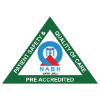Overview

Goals
The broad goal of the teaching of undergraduate students in Surgery is to produce graduates capable of delivering efficient first contact surgical care.
OBJECTIVES

Knowledge
At the end of the course the student should be able to:
-
Describe aetiology, pathophysiology, principles of diagnosis and management of common surgical problems including emergencies, in adults and children.
-
Define indications and methods for fluid and electrolyte replacement therapy including blood transfusion.
-
Define asepsis, disinfection and sterilization and recommended judicious use of antibiotics.
-
Describe common malignancies in the country and their management including prevention.
-
Enumerate different types of anesthetic agents, their indications, and mode of administration, contraindications and side effects.





